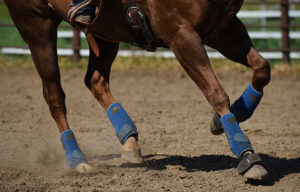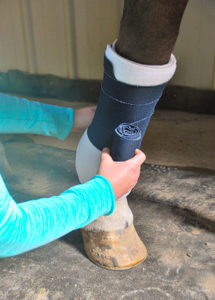Could Bone Marrow Aspirate Help Heal Tendon Injuries?
Tendon injuries in horses are notoriously tricky to manage with conventional conservative treatment methods. The good news, however, is that research into regenerative therapies—which could potentially improve tendon healing—is ongoing.
“When tendons are injured, the body repairs them with scar tissue, which is not as strong or elastic as the original tendon tissue,” said Tom Russell, BVMS, Dipl. ECVS, from the Bendigo Equine Hospital, in Victoria, Australia. “As a result, horses are prone to (potentially) career-ending re-injury.”
Superficial digital flexor tendon (SDFT) injury is common in athletic horses, and the road to recovery tends to be long and sometimes unsuccessful. In one study, for example, researchers found that horses were laid up for an average of 13.5 months; only 46% of injured horses returned to work; and 35% of those that did return to function suffered re-injury. Other reports suggest that while almost all horses with an SDFT injury return to racing, 80% of them subsequently re-injure the tendon.
Conventional treatment approaches include rest, intralesional (in the lesion) injections, and surgery. More recently, veterinarians and researchers have also explored the impact of regenerative therapies, such as stem cells, on tendon healing
Create a free account with TheHorse.com to view this content.
TheHorse.com is home to thousands of free articles about horse health care. In order to access some of our exclusive free content, you must be signed into TheHorse.com.
Start your free account today!
Already have an account?
and continue reading.

Written by:
Stacey Oke, DVM, MSc
Related Articles
Stay on top of the most recent Horse Health news with















